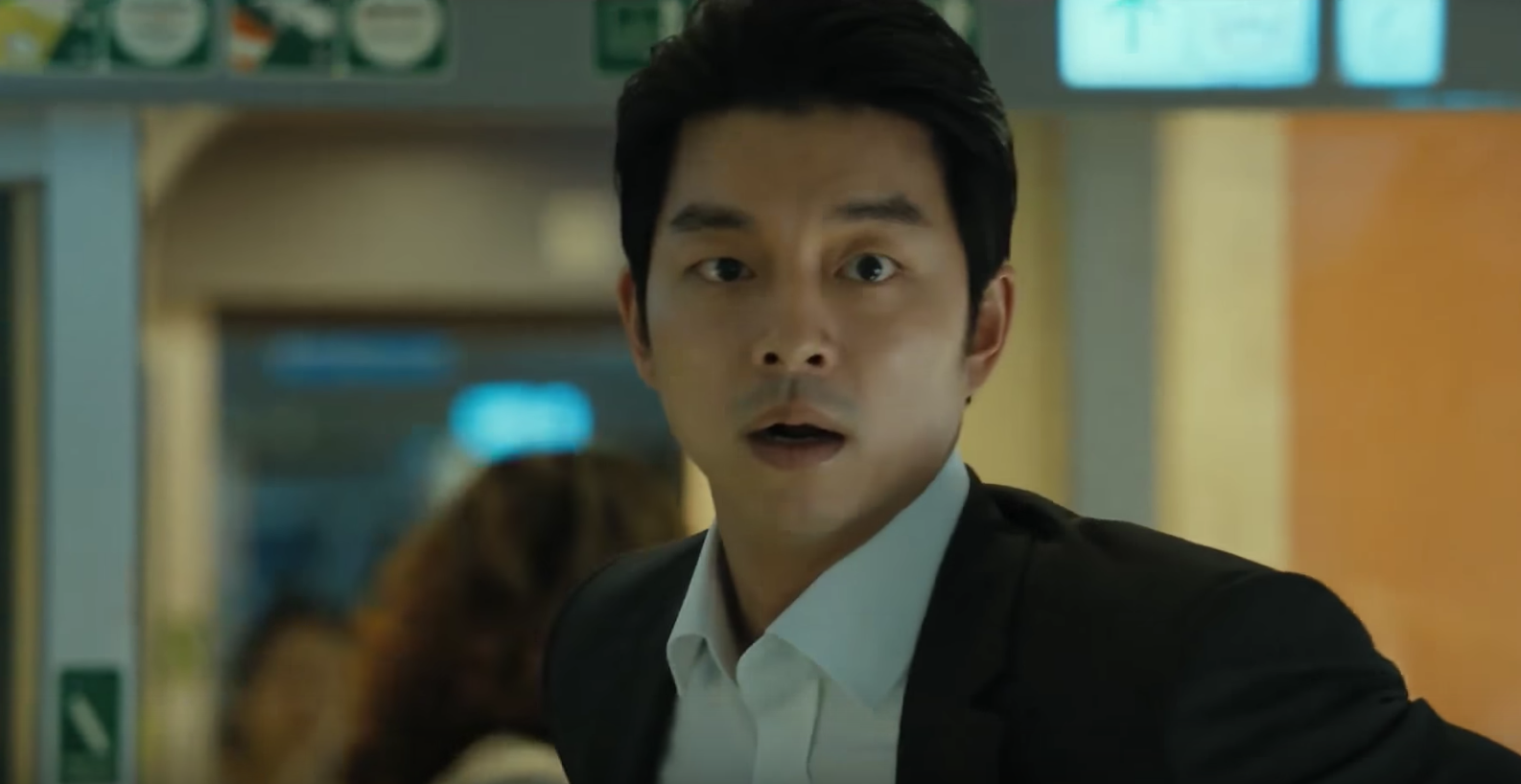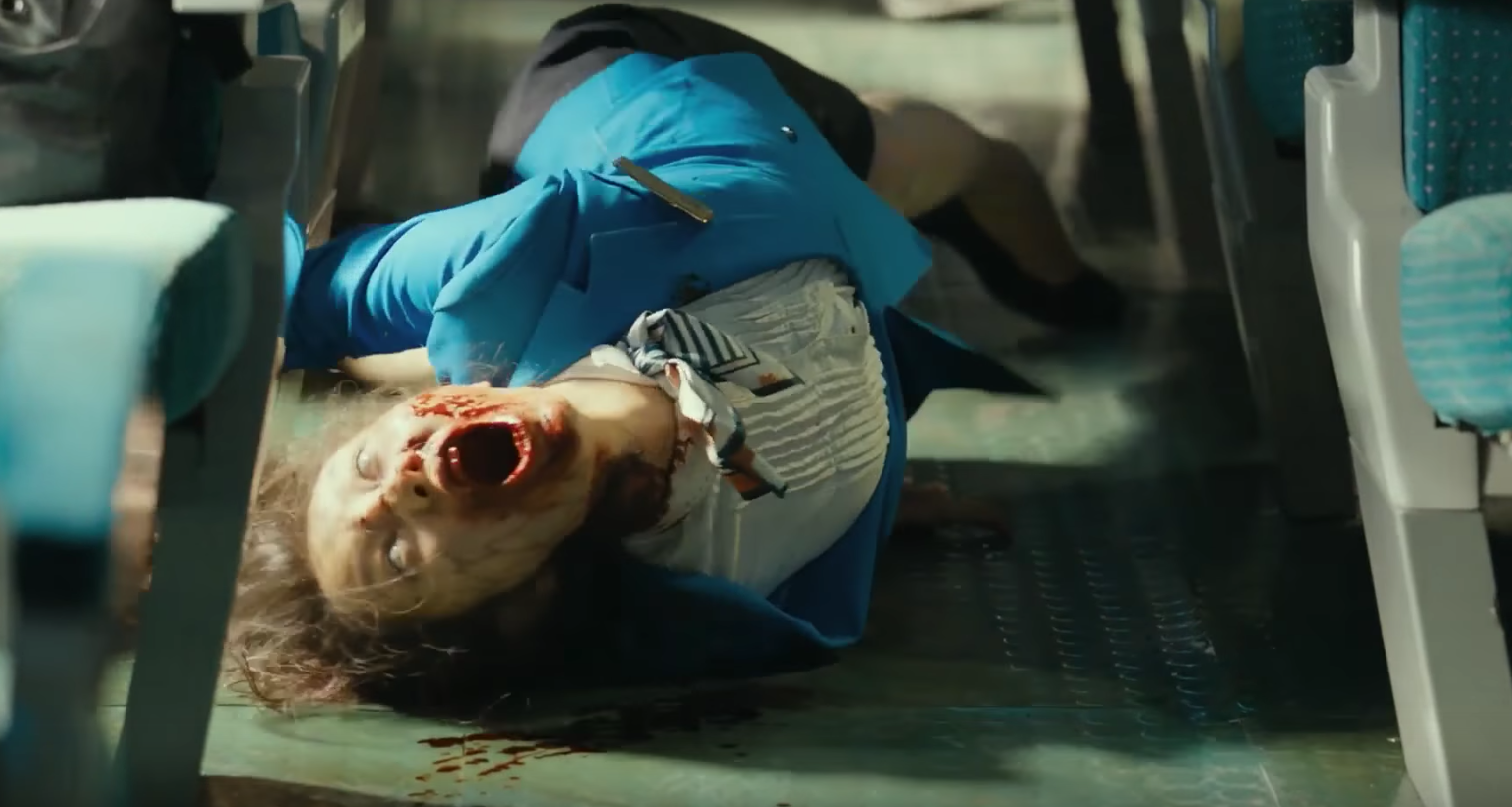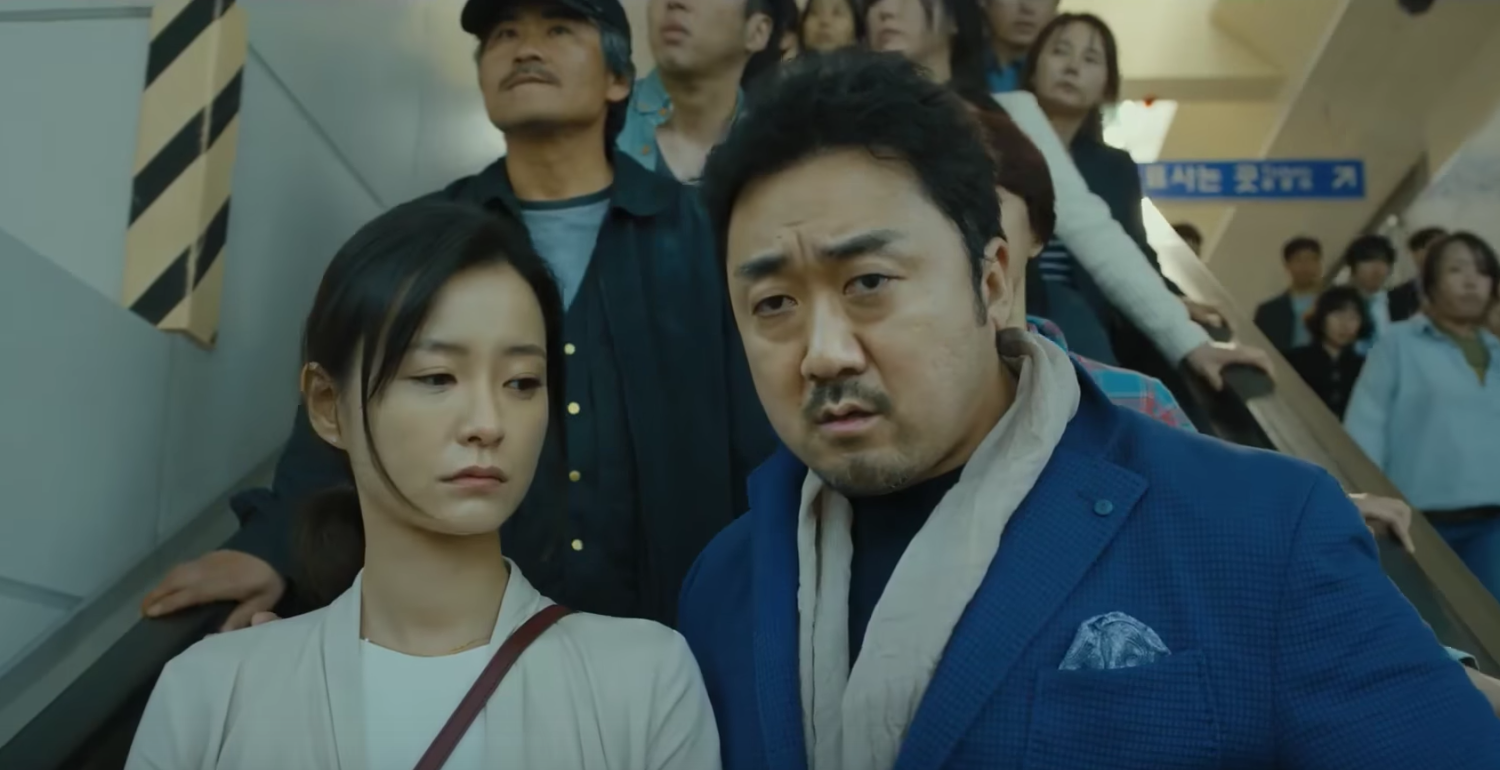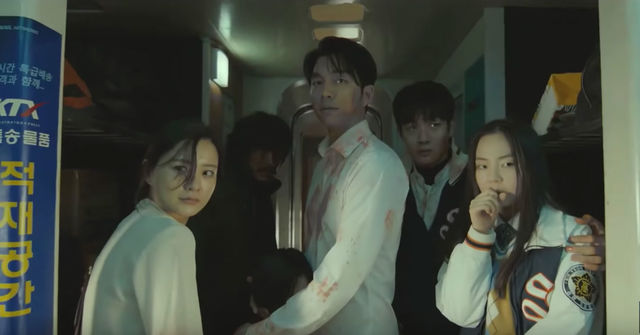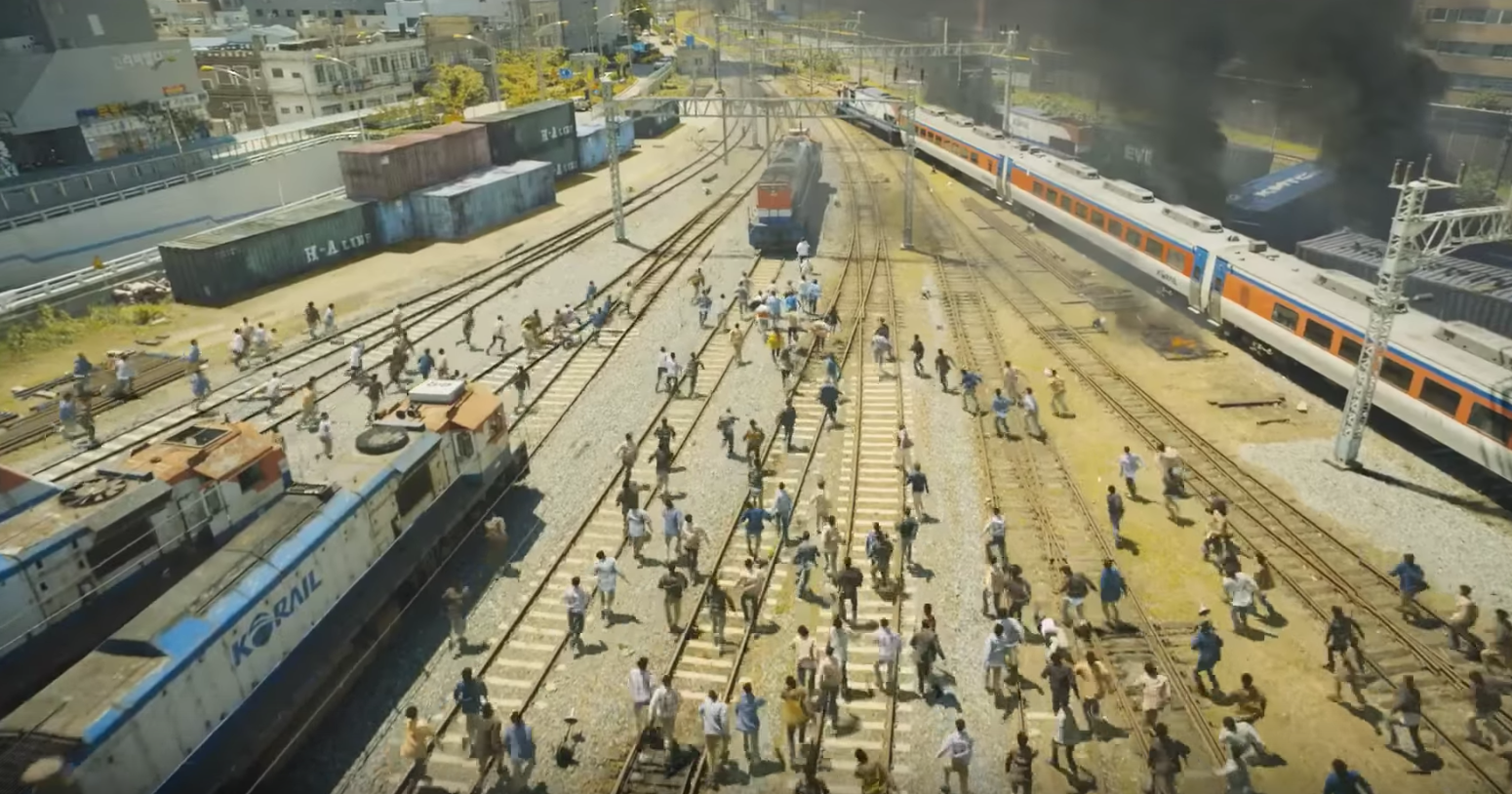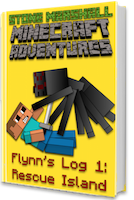Mari Takahashi Of Smosh Games Uses ‘Minecraft’ To Promote Upcoming Role On ‘Survivor’
At 8 PM ET/PT on September 21st, the 33rd season of the CBS reality series Survivor will begin. This year’s competition carries the subtitle Millennials vs. Gen X, and it will pit contestants from two neighboring generations against one another. For fans of YouTube, there will be a familiar face in the Millennial camp. Mari Takahashi, known for her videos on the Smosh Games channel, will attempt to outlast her fellow competitors to earn the title of Sole Survivor.
As Takahashi told Tubefilter, she was introduced to the CBS team behind Survivor after two fellow YouTube stars, Joslyn Davis and Erin Ward of Clevver TV, were contestants on another CBS reality series, The Amazing Race. Davis and Ward are friends of Takahashi’s (and fellow Defy Media partners), which led to her selection for the new Survivor season.
To prepare for her Survivor role, Takasashi “binge-watched” all of the show’s previous seasons. “Good thing for me,” she told Tubefilter, “I’m actually really good at sitting on the couch and watching television.” She also noted that several of Smosh Games’ more physically-demanding videos, such as those in its Smosh Summer Games series, helped her prepare for the challenges she would face while on the Survivor island.
While Survivor filmed in Fiji earlier this year, Takahashi’s team at Defy Media had to pull off a digital media magic trick of sorts: They had to make her seem active in Smosh Games videos even when she wasn’t there, in order to maintain the confidentiality of her agreement with CBS. To pull that off, she had to film several videos ahead of time. “We shot about two months worth of videos in advance to make it look like I didn’t go anywhere,” she said.
When the broadcast of the new Survivor season begins, Takahashi expects to see many new viewers migrating from CBS to her videos — and that’s where a new series, titled Maricraft: Outlaster comes in. Launched two days before Survivor’s season premiere, Outlaster is a semi-scripted series that creates a mock Survivor setup within the world of Minecraft. All of the Smosh Games hosts will be present, and their avatars will participate in challenges, confessionals, and other typical Survivor fare across six episodes.
While Takahashi thinks longtime Smosh Games fans will enjoy Outlaster, she also believes that new viewers from CBS will dig it as well. She says the series is “the bridge” between YouTube and TV and “the way for us to say ‘this is what we do, let’s put it in a perspective you might understand.’”
Don’t think for a second, though, that Takahashi will leave her fans behind as she appeals to TV viewers. Survivor is a fun jump to TV for her, but in the end, she’s still a YouTuber at heart. “I’ve never been more grateful for what I get to do and the people I get to do this with,” she said. “I went a month-and-a-half without technology, without any connection to friends and family, and when I came back, it was the best homecoming I could have possibly asked for.”
Mari Takahashi Of Smosh Games Uses ‘Minecraft’ To Promote Upcoming Role On ‘Survivor’
The Minecraft Server That Will Kill You 1,000 Times
Time moves differently in Minecraft. A day lasts 20 minutes. A night lasts only seven. With the right conditions, Rome can be built in a day. And with the right supplies, a troll can burn it to ashes in minutes.
2b2t, a malevolent form of Minecraft, is full of such ruins: It’s a place of beauty and terror.
Try Newsweek for only $1.25 per week
Ranked among the world’s most popular video games, Minecraft is often praised for fostering creativity and constructive play. It is the parent-approved successor of Lego, even used as an educational tool in schools. In addition to the usual gameplay modes, multiplayer servers turn the game into a social activity. These communal worlds are subject to rules: Start a fight or destroy property, and a moderator will usually ban you.
2b2t is an “anarchy server,” the oldest and most infamous of its kind. It offers a world without rules, where aggression is encouraged and survival is rarely assured. 2b2t plays out like a Cormac McCarthy novel built with thousands of 1×1 digital bricks.
While Minecraft is the terrain of the imagination, 2b2t gives free rein to your darkest impulses. And now, 2b2t is being ravaged by war.
The Facepunch Era
Anarchy servers are a dark tradition within Minecraft. In a standard game, you are dropped into a randomly generated world, where you mine for resources and build structures, one block at a time. There’s a survival mode—players have to scrounge for food and fight off zombies at night—and a more free-form creative mode, where players have unlimited health and resources. Players can join friends and strangers to play in servers online, though they are discouraged from attacking others, laying waste to buildings or using pornographic terms to describe someone’s mother.
There are no such rules on the anarchy servers. They are by nature inhospitable—in general, players are advised to bury their supplies, arm themselves to the teeth and be prepared to die many times over. 2b2t—“2builders2tools”—was created in 2010 by a user named Hausemaster and is known as “the worst place in Minecraft.” It has its own subreddit, a webcomic and a “2b2t Press” news site, where pseudonymous players post updates on the ongoing war’s latest atrocities. One writer exploring it found it to be littered with Islamic State (ISIS) flags.
Its first colonizers were users of the Facepunch forum, hence 2b2t’s seminal “Facepunch Era.” Members began to map and establish bases. The first factions were formed as rival forums signed up to the server and began to launch raids to destroy each other’s work.
Today, the server is more chaotic still. Players are divided into two camps. “Rushers” are disorganized newbies seeking to infiltrate 2b2t’s settlements and claim them as their own. They battle the “veterans,” more experienced residents who have rigged the “spawn” (the point at which players arrive in the game) with traps to kill off new players.
The newbie invasion was triggered by TheCampingRusher, a YouTuber whose video exploring the server was posted on June 1 and already has over 2 million views. In the video, his elation is palpable as he enters this previously hidden world. Almost immediately after it was posted, new players began to flood into 2b2t, throwing the server deeper into chaos.
Since then, the battle lines have become more ambiguous: 2b2t’s oldest users have retreated to edges of the map to preserve their settlements and sit out the siege in peace, leaving the newbies to attack each other.
My Time in Minecraft Hell
Much of the appeal of 2b2t is about learning what is possible—a world with few limits other thanone’s will to power and survival. In the server, cuddly Minecraft becomes a horror game, one that demands a Zen-like sense of self-effacement as you die repeatedly and re-spawn back to where you started. In the chat window, a stream of insults and shitposting blends in with server updates. No arrival goes unannounced. No death goes unsung. While playing, I’m informed that a player called Dr Funky Pepper has just “become lava.” Two others get “slashed into gibs by a zombie pigman” and reduced to “a bloody meat pile with just fists.”
To traverse 2b2t is to feel lost and overwhelmed, and to play is to accept this pain and confusion as a condition of existence. The ordeal begins even before you enter: The queue to join the server is over 1,000 players long. A very slow-moving countdown appears on screen; when it reaches zero, you’re allowed in.
It took me three tries and over four hours to join 2b2t. It was worth the wait. I spawned before an abyss—I was standing looking at a heady drop into sea and stone and lava. After I overcame my virtual vertigo, I edged my way up a gigantic craggy mountain.
Hidden across the landscape are some especially cruel traps: fake sanctuaries that explode in flames, pits that drop you into a river of lava and false floors that open into prisons built from obsidian, with no way to dig out. (Players entombed there have no choice but to log out and sit through the queue all over again.)
To navigate this land requires an arsenal of hacked clients—altered versions of the game with enhancements, similar to cheats, like X-ray vision or teleporting. Popular cheats include the power to see through walls to find supplies and victims and one to improve aim. (This might explain how a figure in the far distance was able to shoot me down with a crossbow. In the dark.)
As I played, alerts in my chat window listed the deaths occurring by the second; the calming, ambient Minecraft theme song played as body after body hit the floor.
Nazi propaganda, racist slurs and a succession of death threats pour into the chat window with mechanical efficiency. Their sheer volume negates the effect, and they become part of the background. I want to beat this. I want to feel at home in chaos.
I too am cursing now, shouting very loudly at my screen. I fall. I re-spawn. I fall again.
A Story Written in Blood
For several years now, Devi Ever has been known on 2b2t as something of a pirate and a griefer (those who terrorize other players for their own amusement). She says the best sights in 2b2t are far out from spawn, logged by players on interactive maps where the distance is measured in bricks—one brick is roughly equal to a cubic meter. “The million [brick] mark…that’s where all the cool stuff is,” she says. “The thing I enjoyed the most wasn’t destroying, it was exploring.”
She adds, “Exploring 2b2t is like archaeology.… There’s so much that it says about the nature of Minecraft itself and about the design of the game. 2b2t deserves a book.”
As a seasoned player, Ever has access to the priority queue, which allows her to skip the four-hour wait (some fans believe this is an artificial barrier, one thrown up to slow anyone who joined after June 1, the date TheCampingRusher’s video went live). Players have approached her asking to buy her old accounts for their quick access privileges. Sometimes they’re looking to trade intel for espionage or offering payments of hundreds of dollars. Information is currency in 2b2t: Ever traded a spare account for the location of 2b2t’s fabled Jesus statue, built in homage to the Christ the Redeemer in Rio de Janeiro.
The server’s massive size and ephemeral nature make it difficult to track its history. Still, there are attempts to organize its past into a coherent narrative. Redditor ArchCrono, known in-game as ArchQuantum, authored a series of posts detailing 2b2t’s history, which eventually made it to the site’s front page. Their popularity is why he was asked to lead a faction into 2b2t, a challenge he reluctantly accepted.
Why do players queue for hours just to spawn and be killed off in seconds? “Minecraft notoriously lacks a standard story mode,” ArchCrono theorizes. “This is a very real void the developers have not chosen to directly address.”
2b2t provides a meta-narrative beyond the game, similar to the halftime show during sports broadcasts. Players post about the server on YouTube and Reddit, like amateur sports analysts. “If you are on 2b2t, what you do matters more than what you do on a single player or local setting, because it is available to so many people,” ArchCrono says. “The YouTube channels that cover 2b2t, particularly TheCampingRusher and FitMC , are providing commentary that crafts the plot of a story mode. When I posted on Imgur, I basically added an entire new section of plot.”
The rushers, then, are queuing up to play a role in Minecraft history.
Not Safe for Life
Hausemaster, the founder of 2b2t, is a quasi-mythical figure both praised and trolled . He says he set up the server in 2011, when Minecraft Multiplayer was first released. Players flooded in, forming settlements and communities. He picked 2b2t’s final setting, “anarchy” mode without moderation. “I wanted to see what destruction would be made, but also whether there would be connections between players in such a chaotic, rule-free environment.”
I assumed Hausemaster would disapprove of the current influx of rushers, but he’s happy to see the server getting attention, even if the world he helped create erupted in violence. “2b2t is definitely not ruined—in my opinion it’s how it should be: absolutely chaotic.”
2b2t gives players free rein to abuse, destroy and self-destruct. It is essentially nihilistic, as players thrash against the walls of their virtual cage, taking out their disaffection on the same technology they are addicted to. Their behavior is more than not safe for work: It is not safe for life itself.
Perhaps enduring this noxious landscape is ultimately 2b2t’s true appeal. “2b2 is about pride,” says Ever. “Pride in being able to flourish in what is considered the most notorious environment you can play in.”
Nobody survives very long in 2b2t—the pride comes from having died there.
5 world-building games for Android and iOS inspired by Minecraft
Minecraft is a very popular game for a reason – it lets players experience a vast world that they can shape into their own, mining resources, crafting items, building structures and defending themselves against adversaries. Its clever concepts and throwback visual style have spread themselves across the gaming industry, defining the genre of world-building games.
Roblox
Roblox is a fantasy world in which you hang out and interact with other players’ blocky characters. You can participate in many activities, such as playing paintball, running a pizza shop, battling pirates and zombies, racing, and many other mini-games. The world-building aspect isn’t as prevalent as it is in Minecraft, but the sheer amount of mini-games and possibilities turns Roblox into quite the multiplayer adventure. You are, of course, free to message and chat other players to organize activities and have a good time. So if travelling across a big open world is something you’re into, you’re going to like Roblox as a more “civilized” alternative to Minecraft.
The Blockheads
Blockheads is a sandbox game inspired by Minecraft’s activities and blocky visual style. You are to explore, mine, craft and build things in a big and detailed game world. There’s a full temperature and climate system, season changes, an equator, and the frozen poles as well as cave systems, pools of water, deserts, and snowy mountains. You will have to keep watch over your blockheads in a randomly generated world – caring for their basic needs like food, clothing, sleep, and shelter; craft tools with the resources you find, such as precious stones and metals, or rare plants and animals. You can also build a boat and navigate the oceans guided by an accurate night sky. All adventurers are welcome!
Terraria
Terraria is a well-established Minecraft alternative where every world is unique – be it floating islands in the sky, or the deepest levels of The Underworld. You’ll be able to adventure to the ends of the Earth, battling villainous bosses along the way. The game features over 1300 crafting recipes for weapons, armor, potions, and other items. You will fight over 450 types of enemies and 20 bosses, mine more than a hundred block types, and explore over a dozen environments with their dynamic water & lava, or day and night cycles.
Growtopia
Growtopia is a sandbox platformer MMO where you get to build all sorts of things, such as houses, dungeons, songs, artworks, and puzzles. You will collaborate with millions of players, playing mini games like parkour, surgery, quizzes, PVP battles, capture the flag, and races. Advance your world by planting seeds to grow trees, trading items, exploring other people’s worlds, chat, and hear an original soundtrack.
On My Own
On My Own is a game of balancing between the serenity of experiencing the outdoors with the reality of struggling to survive in nature. You must stay alive by finding food, crafting useful items, and adapting to the changing seasons. There are four different “biomes” to explore, rendered in a throwback visual style with modern effects to the tune of an original soundtrack.
5 world-building games for Android and iOS inspired by Minecraft
Microsoft Weaponizes Minecraft in the War Over Classrooms
Minecraft is not your average video game. It’s phenomenally popular, yes, with more than 40 million people playing it every month. But Minecraft is a crossover hit: it’s the rare game that’s big among four-year-olds and forty-year-olds alike, and it boasts more female players than many other hit games. The second-bestselling game of all time, Minecraft has proven itself to be an enduring cultural phenomenon.
It’s also unique because it’s no longer just a form of entertainment: its endearing world of textured cubes is officially becoming an education product.
Microsoft snapped up the company behind Minecraft, Mojang, in 2014. Since the acquisition, one of Microsoft’s top priorities for Minecraft has been to develop it as a classroom tool. For years educators have been using the original game and its modified versions (mods) to teach subjects as diverse as ancient Roman history and computer programming. This flexibility has led Ian Bogost, a professor of interactive computing at the Georgia Institute of Technology and a video game designer, to hail Minecraft as the equivalent of Legos or a microcomputer for the younger generation.
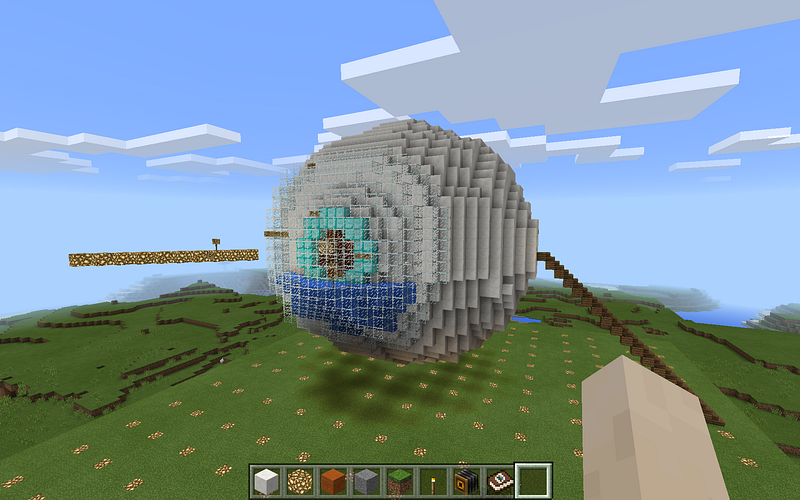
“It’s game-changing because of the way it has broken the market and cultural barriers between commercially successful entertainment games and educational games,” says Mimi Ito, a cultural anthropologist at the University of California, Irvine who focuses on learning and new media. “Specific educational features of Minecraft — shared virtual world, construction tools, hackability— are not new, but what’s really new is the fact that it has been put together in a package that is embraced at a massive scale by kids, parents, and educators.”
This fall, Microsoft plans to weaponize Minecraft in the war for classroom mind-share by selling an education edition. It could prove an unexpected advantage in Microsoft’s increasingly fierce battle with rivals Google and, to a lesser degree, Apple over the education market. Microsoft’s Windows operating system still rules the global education market, but Google Chromebooks, which are cheaper laptops designed to run Chrome OS and primarily use online apps, have grown to dominate U.S. classrooms. In 2015, Chromebooks topped 50 percent of personal computer sales in the U.S. K-12 education market for the first time, with Windows PCs trailing at 22 percent, according to a Futuresource Consulting report.
Microsoft has also been dueling with Google over education software, especially for managing and grading assignments. In April, it announced a Microsoft Classroom update to its Office 365 cloud service as a direct challenge to the Google Classroom and Google Apps for Education platforms. But a version of Minecraft tailored to K-12 classrooms could prove the truest arrow yet in Microsoft’s quiver as the tech giant aims to win over educators and students.

By the time Microsoft acquired Minecraft, the game was five years old and had sold more than 50 million copies for PCs, smartphones, and video game consoles.
The game’s popularity grew in part because it was accessible: plenty of four-year-olds could start playing it with almost no instruction. But advanced players stayed engaged by discovering a complex world of hidden in-game mechanics and additional creative possibilities through player-made mods. In the game’s Survival Mode, players must withstand attacks by monsters while figuring out how to mine resources, farm animals, and crops; they also have to craft increasingly complex tools and technologies. In the sandbox-style Creative Mode, a player might build a virtual version of the Eiffel Tower. Or recreate the city of King’s Landing from the HBO show Game of Thrones. Or construct a working 32-bit calculator within the game.
But by 2014, Minecraft creator Markus “Notch” Persson had grown weary of managing the expectations and complaints of Minecraft’s player community. When he posted a half-joking message on Twitter asking if anyone wanted to buy him out, big companies took notice. He entertained offers from video game behemoths Activision Blizzard and Electronic Arts before eventually going with Microsoft, according to Forbes Magazine.
On September 15, 2014, Microsoft announced the $2.5 billion deal to purchase Persson’s company, Mojang, and the rights to Minecraft. He and his co-founders gracefully bowed out and handed over the reins to Microsoft.
Most media attention at the time focused on how Microsoft could leverage the game to bolster its mobile presence and prop up the popularity of Windows. The following year, journalists gravitated toward Microsoft’s demonstration of an augmented-reality Minecraft as seen through HoloLens goggles. But a few shrewd observers pointed to education as the place where Microsoft could get a major boost out of Minecraft.
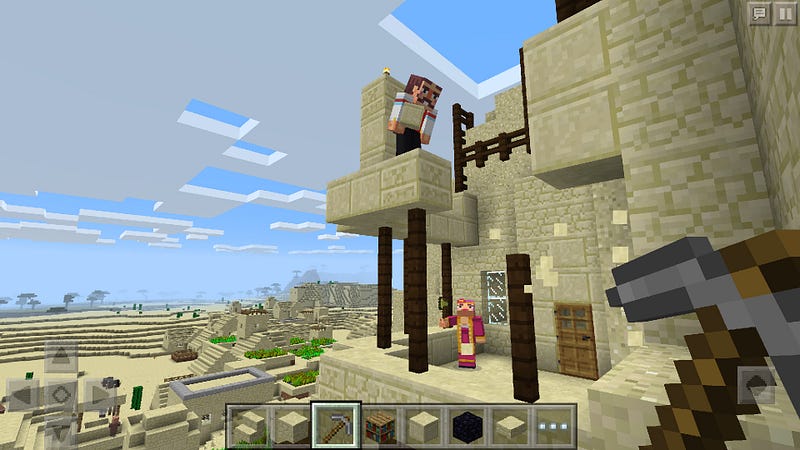

In the two years since Microsoft’s acquisition of Mojang, Minecraft has continued to collect new players by the cartful. Sales have doubled to almost 107 million copies sold as of June 2016. If you were to count each copy sold as representing one person, the resulting population would be the world’s 12th largest country (after Japan). In 2016 alone, Minecraft has sold more than 53,000 copies on average each day.
But Microsoft has bigger plans for the game of cubes and creepers. Earlier this year, the tech giant made another acquisition that led directly to its new Minecraft: Education Edition initiative.
The MinecraftEdu story begins in 2011 with Joel Levin, a computer teacher at a New York City private school. Levin became a leader in Minecraft education by blogging about how he was using the original game in his classroom. He eventually joined two Finnish entrepreneurs in co-founding Teacher Gaming LLC and licensing Minecraft to create MinecraftEdu, a modified version that gives educators the tools to create lessons within the game.
By the time Microsoft approached Teacher Gaming, MinecraftEdu had been deployed in 7,000 classrooms across 40 countries. On January 19 this year, Microsoft announced it had bought MinecraftEdu and planned to build out its own version of Minecraft for classrooms called Minecraft: Education Edition.
Minecraft: Education Edition promises classroom management tools that will allow teachers to more easily coordinate students in a multiplayer environment. New tools will let teachers create their own lessons or use ready-made lesson plans, such as “City Planning for Population Growth,” “Exploring Factors and Multiples,” or “Effects of Deforestation,” according to a Microsoft spokesperson.
In June, Microsoft announced a free early access version of Education Edition. “More than 25,000 students and educators in over 40 countries around the world experienced the early access program and provided feedback to help us fine-tune the product,” says a Microsoft spokesperson. So far, though, not every feature of Education Edition is being met with whoops of joy. For example, Microsoft chose to include in the game virtual chalkboards — a decidedly old-fashioned tool plunked down into a 21st-century game.
“I would like it if what Microsoft had to say is that schools should be more like Minecraft, not that Minecraft should be more like a classroom,” said Chad Sansing, a web literacy curriculum developer at Mozilla and a former teacher, in a Motherboard interview.
UC-Irvine’s Mimi Ito, in her work using Minecraft to educate kids, has found the game better suited to less formal, more kid-native uses. In mixed-age summer camps and after-school programs, for example, she’s seen teenagers mentoring younger kids on shared Minecraft projects. “It’s magical for kids to connect with and learn from experts who are just a little bit older than them and who are passionate about the same things,” Ito says.
By tailoring Minecraft to formal school settings, Microsoft runs the risk of sacrificing some of the game’s inherent strengths. But it’s still a no-brainer for Microsoft to leverage Minecraft in its broader struggle with Google for control of the education market. Google may have Google Classroom to match Microsoft Classroom, but there’s nothing else quite like Minecraft.
Even if Minecraft: Education Edition falls short of conquering classrooms, plenty of schools, libraries, museums and summer camps will continue using the original game to captivate kids in more freewheeling learning environments. All Microsoft has to do is keep supporting it.
“I’ve been studying learning games and edutainment for 20 years,” Ito says, “and I actually never believed there would be a game that would really cross over between the commercial entertainment market and education in a mainstream way.”
Microsoft is right to keep burnishing its unusual jewel. When the kids get out of school, they’ll still be spending hours playing in their generation’s shared virtual sandbox. And wherever Minecraft goes, Microsoft is there.
Explore the World of Minecraft with Xbox One S Minecraft Favorites Bundle
So you’re thinking about getting a brand new Xbox One S console? If you’re a Minecraft player, we think you’ll be happy to meet the Xbox One S Minecraft Favorites Bundle. It has all you need to build, survive and explore with the latest Xbox hardware. We’ve included over 230 character skins, 3 texture packs and 7 Mash-up packs alongside the Minecraft: Xbox One Edition game so you can let your survival and creative skills run wild. If you play Minecraft: Xbox 360 Edition, this is the perfect bundle to make the upgrade to Xbox One S. You can transfer your existing Xbox 360 worlds over to the Xbox One Edition, and enjoy building new ones that are up to 16 times bigger.
What exactly is inside this colorful and lively box you ask? The Xbox One S Minecraft Favorites Bundle includes:
- Xbox One S console (500 GB) with built-in 4K Ultra HD Blu-ray player, and 4K video streaming plus HDR for video and gaming – so you can experience richer, more luminous colors
- New Xbox One S wireless controller with expanded range and Bluetooth support for Windows 10 PCs
- Minecraft: Xbox One Edition download code, with enhanced performance and 16X bigger worlds compared to the Xbox 360 Edition
- Minecraft: Xbox One Edition Favorites Pack download code, which features the Festive Mash-up Pack, Halo Mash-up, Fantasy Texture Pack, Natural Texture Pack, City Texture Pack, Battle & Beasts Skin Pack and Battle & Beasts 2 Skin Pack
- Minecraft: Xbox One Edition Builder’s Pack download code, which includes Biome Settlers Skin Pack, Cartoon Texture Pack, Candy Texture Pack, Plastic Texture Pack, Pattern Texture Pack and the Greek Mythology Mash-up
- Minecraft: Windows 10 Edition Beta download code
- 14 day Xbox Live Gold trial membership
The bundle is available now at participating retailers in the United States and Canada, including Microsoft Stores and microsoftstore.com, for $299.99 USD or local equivalent, with the following markets becoming available shortly thereafter:
- October 11, 2016: United Kingdom, Western Europe & Central Europe
- November 1, 2016: Australia & New Zealand
- Coming Soon: Asia & Latin America
Whether you’re crafting weapons to fend off dangerous mobs or placing blocks to build the grandest of castles, we’re looking forward to offering you an outstanding experience on Xbox
Explore the World of Minecraft with Xbox One S Minecraft Favorites Bundle
‘Train to Busan’ Review: Exhilarating and clever
‘It is ‘Train to Busan’s’ preoccupation with morally complex characters that makes it enduring despite its narrative being contained within very confined spaces,’ writes Oggs Cruz
In Yeon Sang-ho’s Train to Busan, the titular mass transport vehicle serves as an apt and very literary setting for an exhilarating morality tale that pits humanity’s fragile virtues and delicate principles with a ferocious catastrophe.
Zombie infestation
The catastrophe here is a zombie infestation, one that has spread throughout Korea with disarming swiftness, crippling almost all of the country’s infrastructure, except for the train that fortuitously left the station at the right time, except that one infected straggler managed to stowaway.
Screengrab from YouTube/Zero Media
What starts out for workaholic fund manager Seok-woo (Gong Yoo) as an innocent trip to visit his ex-wife as a birthday gift for his daughter Soo-an (Kim Soo-an) turns out to be a struggle for survival when the zombies inside the train start multiplying, and the survivors start dwindling, becoming more and more desperate and vicious against each other. Along with the father and daughter duo is a collection of other passengers, all of whom also represent an entire spectrum of ethical competencies.
It is Train to Busan’s preoccupation with morally complex characters that makes it enduring despite its narrative being contained within very confined spaces.
Screengrab from YouTube/Zero Media
Yeon’s action set-ups are all thrilling, most especially the ones in the middle where the main characters are forced to get past several compartments to rescue their loved ones. However, the interactions among the characters, resulting from the diminishing of the chances for survival, raise the stakes even further, adding fuel to the immense emotions that are already part and parcel of the survival tale that relies so instinctively on very critical decisions.
Streamlined storytelling
Screengrab from YouTube/Zero Media
It is enough that the audience knows that the big and burly fighter (Ma Dong-seok) is an expectant father and that his wife (Jung Yu-mi) is dependent on his protection, that a high school athlete (Choi woo-shik) is also secretly in love with his number one fan (Ahh So-hee), that the two elderly sisters are differentiated by their capacity for kindness, and that a corporate official is unscrupulous when it is his life, which he deems more important than the rest, that is on the line.
Yeon doesn’t waste time peppering characters with unnecessary details.
Screengrab from YouTube/Zero Media
In fact, he introduces most of the characters in one judiciously plotted sequence that reveals enough just so that their respective fates in the midst of all the immediate danger become worth the time, stress and effort. As the movie speeds through all of its brilliantly designed perils, the characters develop personalities that are worth more than idle dialogue.
It is this very essential simplicity that turns Train to Busan into such a feat of streamlined storytelling, with character development going hand in hand with the ingeniously engineered succession of increased tension and urgency.
Championing hope
Even with all the cleverly trimmed characterizations, Train to Busan doesn’t lack the requisite heart to sustain interest despite the gritty showcase of humanity at its most ruthless and self-serving. The film is as much invested in humanity’s potential for kindness, compassion and devotion as it is in its capacity to abandon all forms of decency all in the name of survival.
Screengrab from YouTube/Zero Media
As it turns out, the film champions hope, with its ending focusing on the final and most crucial test on humanity that has seen itself both at its worst and its best during that eventful train ride to Busan. At the end of the day, it is love, expressed through the saddest of songs, that will separate us from all the world’s monsters. – Rappler.com
‘Minecraft’ Gameplay Update: Lego ‘Minecraft’ Skin Packs With Minifigs Not Frustrating Like Lego Magnets; Xbox One Update 32, PS4 1.35 Patch Battle Mode Released
Lego “Minecraft” Skin Packs have been released coming with four complete minifigs that are reportedly skinned from head to toe. Additionally, Lego included accessories for each Skin Packs such as shovels, picks, swords, axes and bows.
Lego “Minecraft” Skin Packs also come with regular minifigs which can be reassembled by players as they please. The said minifigs are said to be lightly fused unlike Lego magnets which are reportedly frustratingly joined together.
Lego’s official online shop lists the Lego “Minecraft” Skin Packs on sale, but they can also be found in some brick-and-mortar stores soon. The Skin Packs sell at $14.99 each, which seem to be the cheapest price for a handful of “Minecraft” minifigs.
Meanwhile, apart from Lego “Minecraft” new Skin Packs, “Minecraft” on consoles just recently received a new update called content update 32 for the Xbox One and patch 1.35 for the PS4. The said “Minecraft” patch are focused on the new Battle Mode with a feature that ramps up the multiplayer component of the game. However, the game’s survival mode did not receive a refresh.
The last few patches of “Minecraft’s” Battle Mode that debuted this summer have also added new features and fixed bugs for the new mode. However, console developer 4J Studios has not done improvements and updates on the Survival Mode ever since Battle Mode launched in June. It has been established that the console version has always been delayed when it comes to update compared to its PC version.
The current delay is actually less than the previous update delays that brought huge changes to the game including ocean monuments for Mine “Minecraft” craft on consoles. In the meantime, reports claimed that 4J Studio is currently working on cool new features to be integrated to the game.
Lego “Minecraft” Skin Packs may not be the last Skin Packs to be released as “Minecraft” and Lego have proven to be a perfect match. This could mean that the franchise may probably add more Skin Packs in the future. Watch New LEGO “Minecraft” Skin Pack 1 & 2 plus DC here:
New Lego Minecraft packs let you show some skin
Your Lego Steve and Alex minifigs are great, but you’re pretty limited when it comes to faithful Lego clothing options. Fortunately the new Minecraft Skin Packs have arrived to address that little problem.
Sure, you could easily just pop Steve’s head onto one of the numerous extra torsos you have laying around, but that wouldn’t look very Minecraft-y, would it? There’s just too much non-pixelated printing on most minifigs… though Steve could probably get away with slipping on the video gamer’s or DJ’s t-shirts.
Now, though, Lego’s got some authentic options for you. They’ve put together a pair of skin packs, and they’re pretty much the minifig equivalent of the ones you’ve been buying for your digital Minecraft characters for years.
Each Lego Minecraft Skin Pack comes with four complete(ly pixelated) minifigs. They’re skinned head to toe, and Lego throws in an accessory for each, including shovels, picks, swords, axes, and bows. These are regular minifigs, too, so you’re free to take them apart and reassemble them as you please. They aren’t frustratingly fused like Lego’s magnets are.
The Skin Packs are on sale over on Lego’s official online shop, and you’ll probably be able to find them at your favorite brick(no pun intended)-and-mortar stores soon, too. They go for $14.99 each, which makes them the cheapest way you can pick up a handful of Minecraft minifigs to add to your collection by five bucks.
Minecraft and Lego have proved to be a perfect fit, so you can probably count on additional skin packs launching in the future. You know, until the franchise stops printing money.
‘Minecraft’ New Update: PS4 & Xbox One Update Enhances Battle Mode, But What About Single Player?
Minecraft on consoles just got a new update, called content update 32 on Xbox One and patch 1.35 on PS4. Like the last few updates, the new Minecraft patch focuses solely on the new Battle Mode, an admittedly cool feature that ramps up the game’s multiplayer component. But also like the last few updates, it leaves survival mode basically untouched. We still haven’t gotten any of the new stuff from the Combat Update that came to PC in the first quarter. The wait goes on.
Battle Mode debuted on the consoles this summer and the last few patches have entirely focused on adding new features and fixing bugs for the new mode. Here’s the PS4 changelog, which is almost identical on the other platforms:
Change log for Patch 1.35 – September 9th 2016
- Remove vote-to-kick function in Mini Games. The host can kick players only in the Lobby.
- Disable small, floating and oddly shaped skins in public Tumble games.
- Fix for Battle mini game showdown playing Tumble mini game showdown sound.
- Fixed a bug where last player to die in Tumble would get stuck respawning.
- Fix for being able to unlock Hunger Pain achievement by killing yourself while starving.
- Fix for crash if a client wins the match and then quits the game.
Ever since Battle mode launched in late June, console developer 4J Studios hasn’t done much with Survival Mode, even though the PC version keeps trucking ahead with cool new features. Battle has definitely been the focus.
And, truth is, that’s okay. The console version has always lagged a good bit behind the PC version and the current delay is far less than we had for the update that changed the world and ocean monuments coming to consoles. And in the meantime, 4J Studio is actually developing cool new features we wouldn’t have otherwise.
We’ll get the Combat Update on consoles eventually. We just have to be patient, and in the meantime enjoy Battle mode. Multiplayer, competitive Minecraft on consoles! Hard to argue too much with that.
‘Minecraft’ New Update: PS4 & Xbox One Update Enhances Battle Mode, But What About Single Player?
‘My Neighbor Totoro’ Has Been Recreated In ‘Minecraft’

(Photo credit: Studio Ghibli)
For fans of My Neighbor Totoro, you can now experience the world of that wonderful film inside Minecraft.
Totoro was a brilliant 1988 anime film created by Studio Ghibli and is a charming coming of age tale. Dealing with a family that has recently moved to the Japanese countryside, they encounter somewhat mystical and entirely benevolent creatures. There’s also a giant catbus, so there’s also that to consider.
The movie was also both a critical and commercial hit and the titular character of Totoro now adorns Studio Ghibli’s cinematic titles as a consequence.
Considering the nature of the movie, Totoro hasn’t had much in the way of video game game adaptations over the years. Minecraft then just feels like a wonderful fit for this, as it is ideally suited for a more sandbox feel and just allows you to wander around a world and explore it at your own leisure.
This recreation is also part of a much bigger fan based project called Ghibli World undertaken by Alan Becker and friends, which also features other recreations from equally famous Studio Ghibli films within Minecraft.
The trailer for this new Totoro recreation (shown below) displays how much effort has gone into this endeavor, as it’s clear that the Minecraft version of the world is surprisingly close to the film’s. Right down to Totoro waiting at the bus stop (shown above).
The more observant of you will also notice that this recreation is not using the standard Minecraft texture pack, instead it is using Sonic Ether’s Unbelievable Shaders and they do do rather lovely job too.
If you are at all interested in seeing the world of Totoro in Minecraft for yourself then the server address is “mc.sourceblockmc.com”.
Minecraft: Story Mode Episode 8 ‘A Journey’s End?’ now available
Minecraft: Story Mode Episode 8 ‘A Journey’s End?’ now available
Minecraft: Story Mode Episode 8 – ‘A Journey’s End?’ is now available to download on PC/Mac, Xbox One, Xbox 360, and mobile devices. PlayStation 3 and PlayStation 4 players will need to wait just one more day as the new episode will launch on September 14th.
Minecraft: Story Mode’s eighth episode picks up with Harper leading Jesse and crew to the world of the Old Builders for a chance to return home. As we’d expect, it won’t be easy to return as we’ll need to take on a number of opponents in a series of gladiatorial games in order to not only win our freedom, but to save our friends and possibly even make it back home.
Minecraft: Story Mode Episode 8 ‘A Journey’s End?’ now available
Minecraft: Story Mode Episode 8 out now
Minecraft: Story Mode Episode 8 arrives today, bearing the appropriate (?) subtitle ‘A Journey’s End?’ You’ll have to play it to figure out whether that question mark should be there or not, but Mojang describe this as the “epic conclusion” and “very final” episode of the three-part DLC series, so I presume it wraps a few things up.
“With Harper leading them to the world of the Old Builders,” the YouTube description reads, “Jesse and crew finally have their chance to return home… but it won’t be easy, and the stakes are high. You’ll need to take on opponents in a series of gladiatorial games to win your freedom, save your friends, and maybe, just maybe, make it back to your own world!”
Episode 8 is available to buy now, either individually for $4.99, or as part of the $14.99 Adventure Pass.
How to create a sustainable farm in Minecraft: Windows 10 Edition Beta
How do I create farms in Minecraft?
Creating sustainable farms in Minecraft is an important factor of long-term survival. Here’s all you need to know about getting a farm set up and keeping it alive in Minecraft: Windows 10 Edition Beta.
- Collect seeds
- Find some farmland
- Till the soil
- Water your crops
- Fertilize your crops
- Protect your crops
- Give your crops light
- Know when to harvest
- Farming other crops than wheat
- Collect seeds
In order to plant a farm, you must first collect seeds from the natural environment.
Find a patch of tall grass and start clicking. Not every piece of grass you hit will produce a seed, but keep at it and you’ll soon have a collection of seeds.
Once you have a farm up and running, wheat you harvest will usually provide between one and three seeds — sometimes no seeds — so that you can replant the crop.
Find some farmland
The ideal spot for a farm is an open, grassy area close to water. As long as your farmed dirt tiles are within four blocks of water, they will become hydrated and will grow much faster. Ensure your farmed tiles are also at the same level or one level below water.
Keep in mind you can also transport water using a bucket. If you’d like to play it safe and stay within your shelter, use this method to create an indoor farm.
Till the soil

Your next step is to start tilling the soil with a hoe. If you haven’t crafted one yet, now is the time.
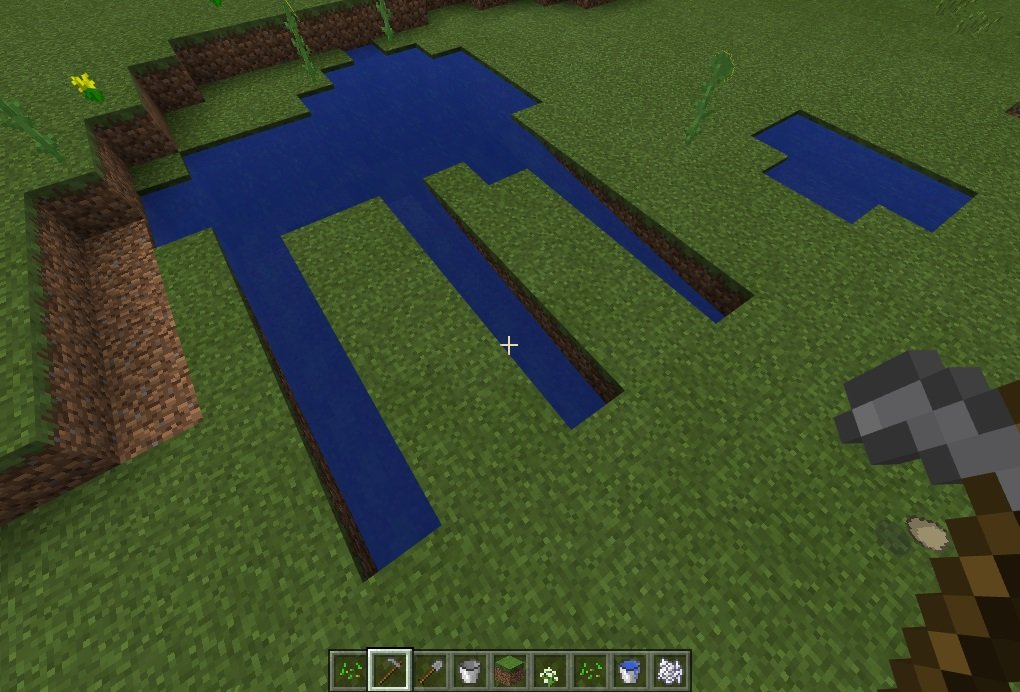
You might also want to dig a few trenches extending out from the water source. Creating rows of crops without any other crops directly next to them, as shown above, will deliver the best growth rate. You also want to keep a bare strip of dirt blocks to walk along, as walking on your crops will damage them.
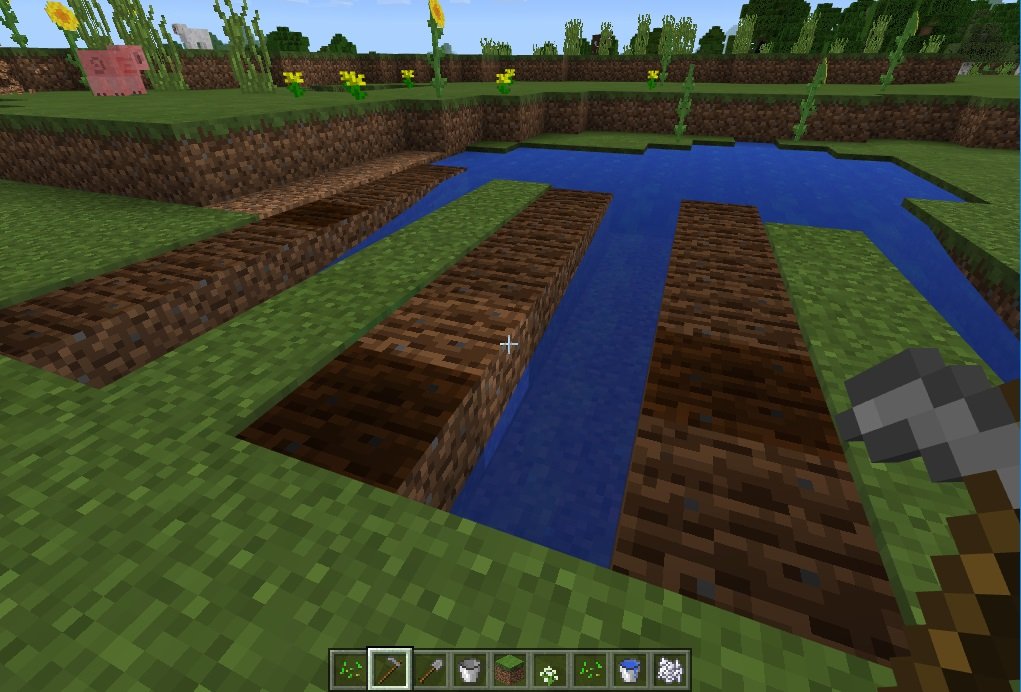
Using your hoe, right-click the tiles you’d like to farm. They will darken if they’re hydrated.
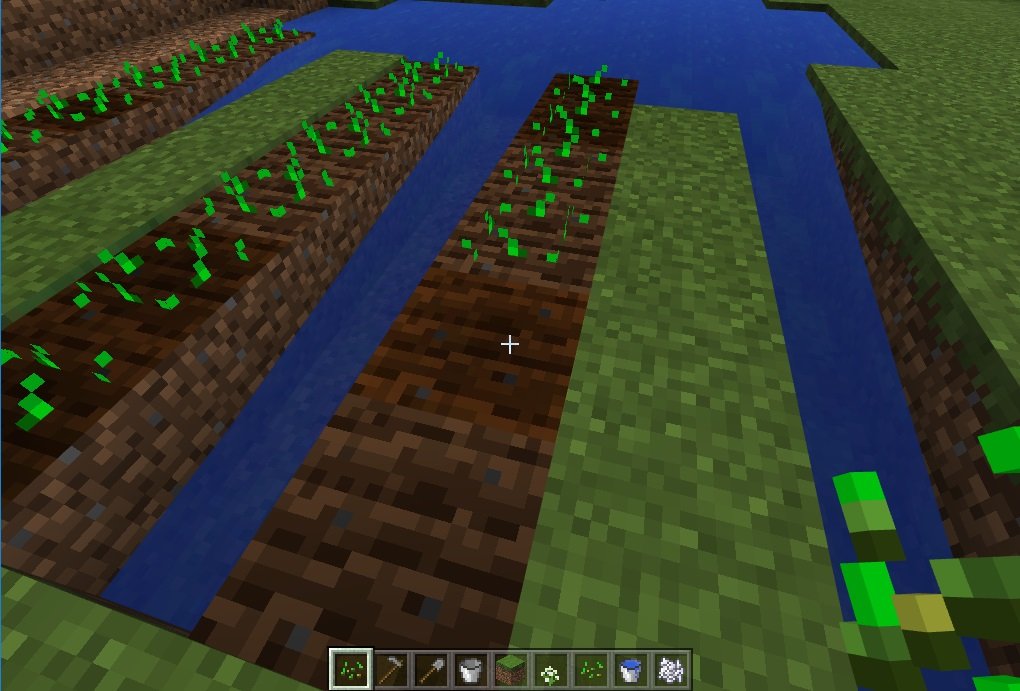
Take out the seeds you collected, and right-click the tilled blocks of dirt. This will plant the seeds, and they will begin to immediately grow.
Water your crops
If you happened to over-extend your crops to where your water source doesn’t reach, or if you want to create indoor farms, you can use a bucket to transport water.

The first step, if you haven’t already, is to craft a bucket.

Next, find a source of water that isn’t flowing. With your bucket, right-click the water to fill your bucket. You will notice the empty bucket icon changes to a bucket full of water.
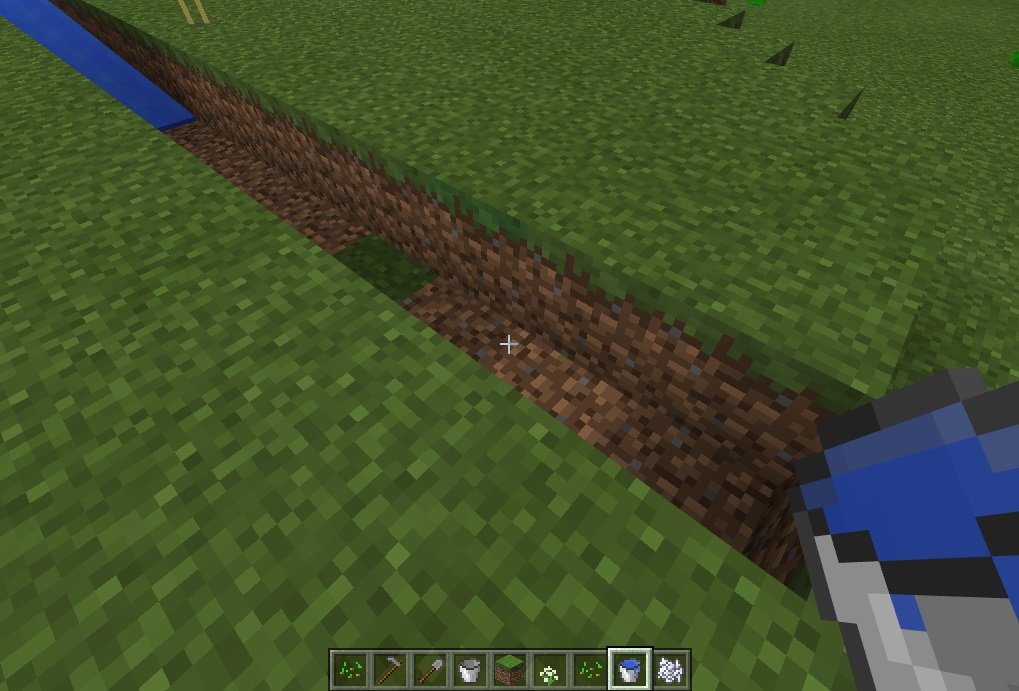
Approach the area of your farm you’d like to water, and right-click the ground — click within a hole to contain the water — to empty the bucket. The water will spread out, watering your crops as it goes.
Fertilize your crops
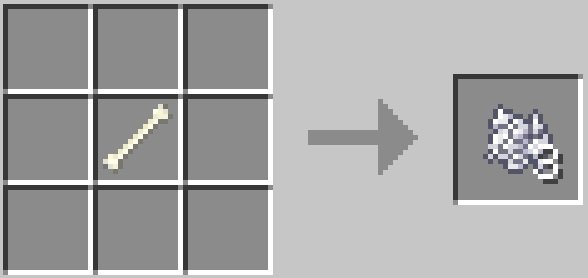
You can use bone meal, which is created from bones, to fertilize and instantly grow your crops. If you don’t have any bones in your inventory, wait for night to fall and venture out with a sword and some armor. Kill as many skeletons as you can without dying!
Once you’ve collected bones and crafted bone meal, right-click with the bone meal on any crops you’ve already planted. Wheat, potato, and carrot crops will grow anywhere from two to five stages.
Protect your crops
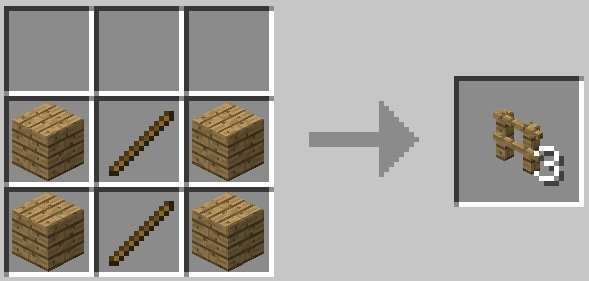
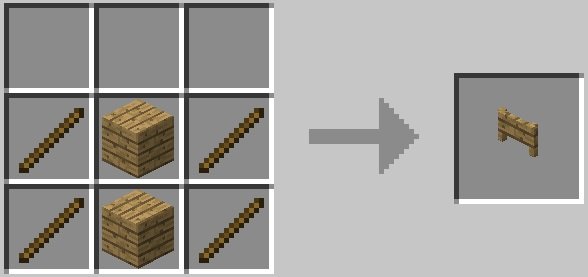
As mentioned, walking on your crops can damage them. This also applies to animals running around your world, so you’ll want to create some fences and a gate.
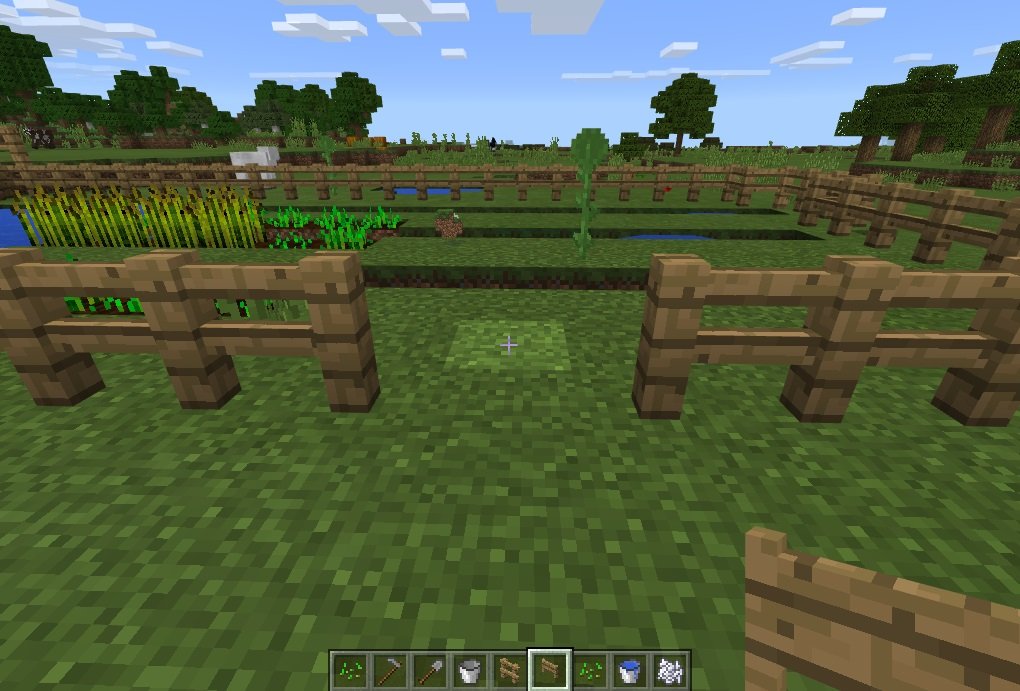
Place fences around the perimeter of your farm, and ensure there are no blocks at the same level nearby — if there are, animals will be able to jump over the fence. Place a gate where it’s easy to access.
Give your crops light
If you’ve created an indoor farm, or if you want to keep your crops growing overnight, you must place torches nearby.
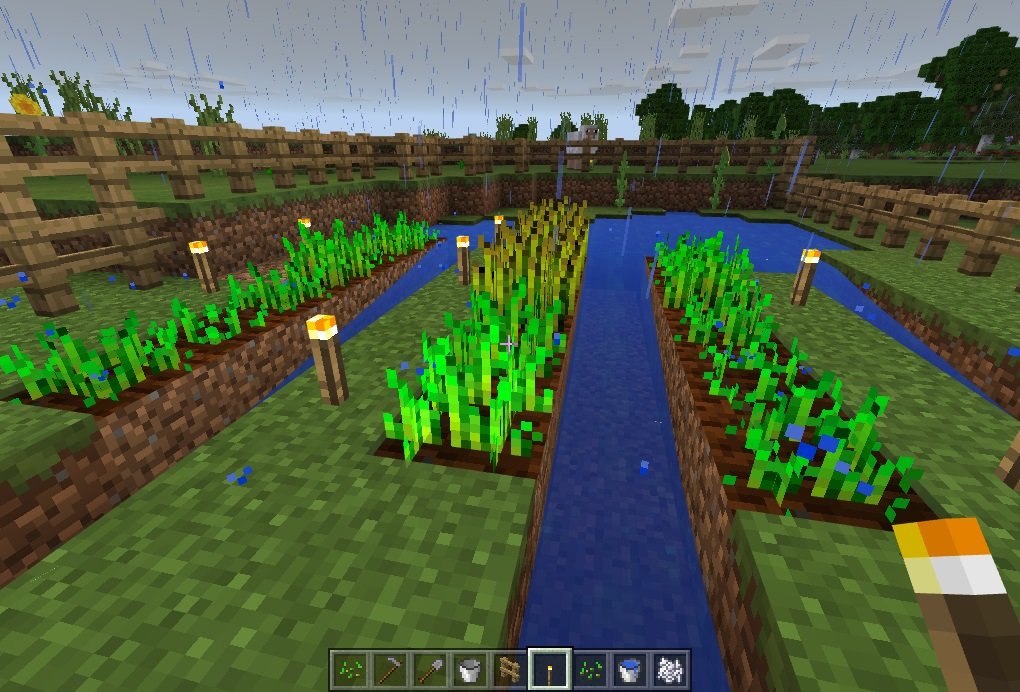
Space out the torches to ensure each block is getting light — you can never have too many!
Know when to harvest
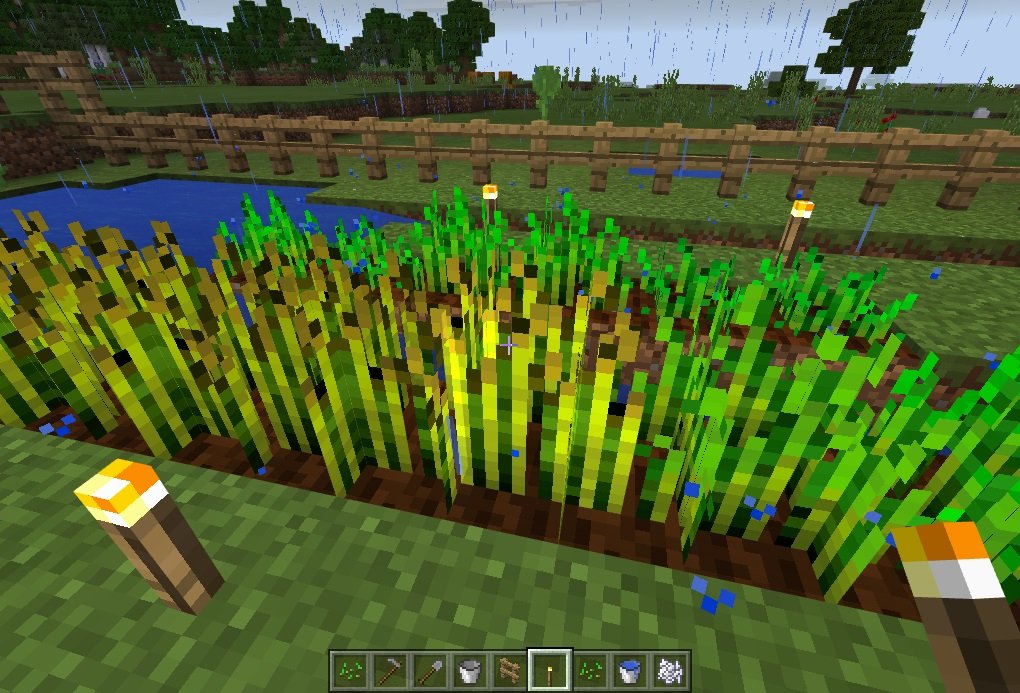
Your crops will go through several stages of growth before they are ready to harvest. If you harvest crops before they’re finished growing, they will not provide any wheat.

Once the stalks have become dark green and the tips of the wheat have become an almost brown color, they’re ready to harvest. Using any tool — or even your hands — click to harvest. Each block will produce one wheat and, usually, some seeds.
Pro-tip: Replant the seeds in the soil before it becomes un-tilled to save time!
Farming other crops than wheat
Cocoa beans
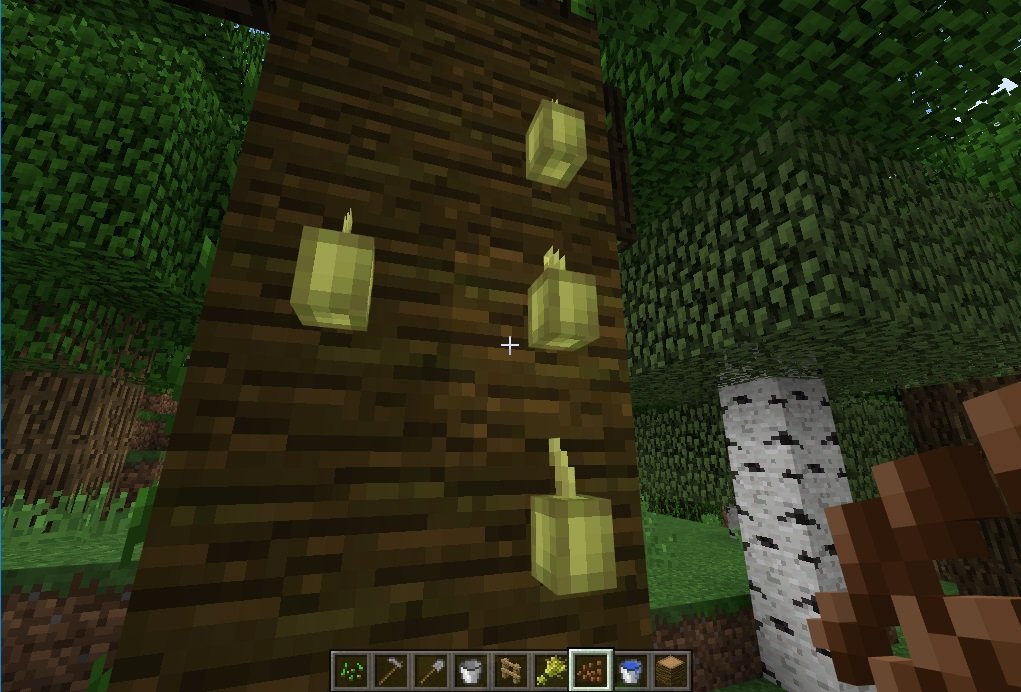
Cocoa beans are usually quite plentiful in jungle biomes — you can find them growing beneath the foliage in trees. Seeds can also be found in dungeon chests. Unlike other crops, cocoa beans must be planted on the side of raw jungle wood. They do not need to be planted near water.
Potatoes, carrots, and beetroot

Found growing near NPC villages, potatoes and carrots can be planted and grown just like wheat, except there are no seeds. Plant whole potatoes or carrots in tilled dirt and wait until they’re fully grown. When harvested, they will produce more units than you planted.
Beetroot grows near NPC villages as well, however, they will produce seeds when harvested. Replant the seeds to grow more beetroot.
Melons and pumpkins
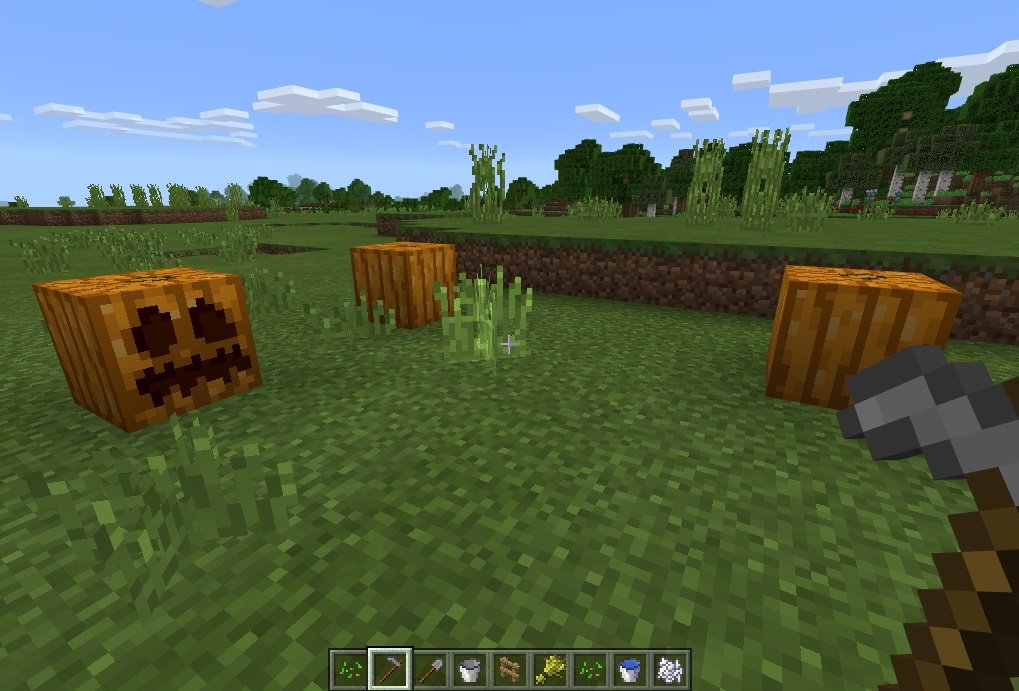
Pumpkins and melons can both be found growing wild, and seeds can be purchased from some NPC villagers. Seeds can also be found in dungeons or abandoned minecart chests. When you plant melon or pumpkin seeds, they will grow and can be harvested. Once you’ve harvested the pumpkin or melon, the seed will continue to grow anew on the same block of dirt.
How to create a sustainable farm in Minecraft: Windows 10 Edition Beta
Why video game Minecraft is a learning aid for schools
BBC Click’s Spencer Kelly goes back to school to see how the video game Minecraft is being used as a teaching aid.
Forget Blueprints—For The Young Architects Of Tomorrow, It’s All About “Minecraft”
Six-year-old Olive Sáenz has been “obsessed” with Minecraft for about a year, says her mother, Andrea Sáenz. “She spends hours building stuff, blowing stuff up, and building stuff again. She’s been pretty amazing at self-teaching.”
But until this past summer, the video game was a solo experience for Olive, who is just now learning to read. Because she wasn’t able to communicate with other players she instead spent hours watching Stampy Cat’s popular YouTube videos, which serve as a Minecraft “how to” for beginners, and putting her own spin on challenges like constructing a roller coaster.
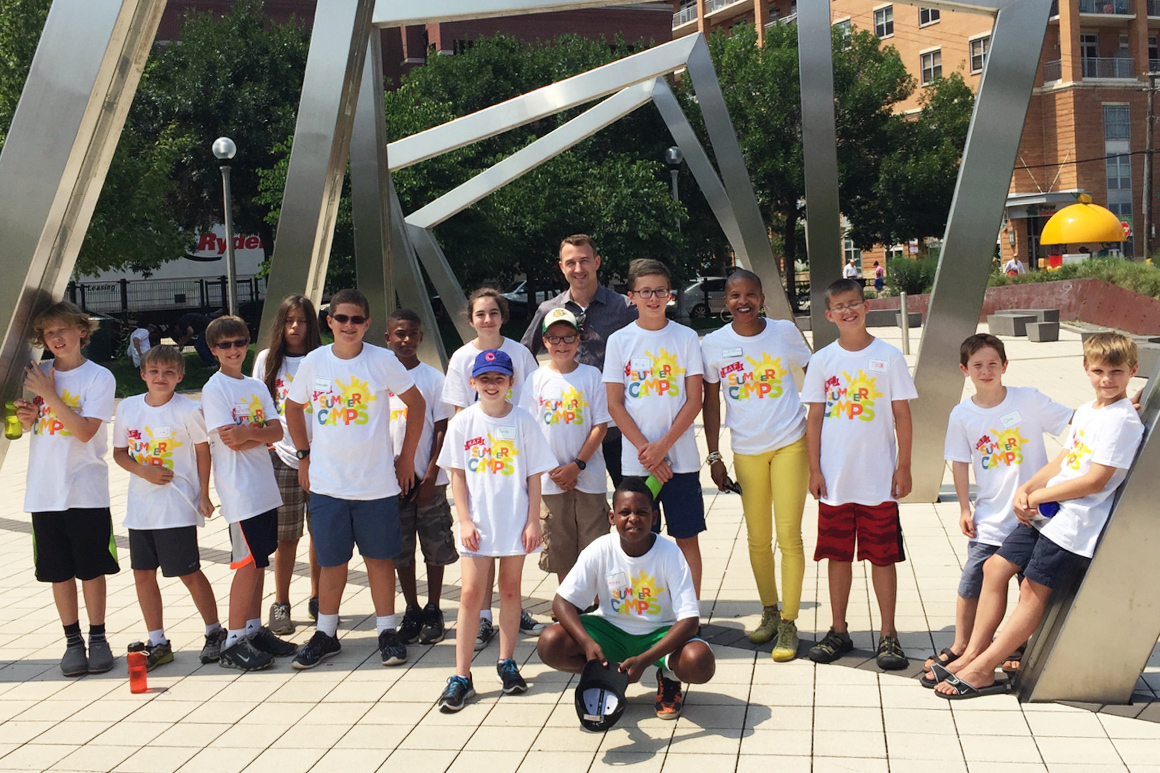
Then, she went to Minecraft camp. At “Skyscrapers of Tomorrow,” a weeklong summer program developed by the Chicago Architecture Foundation, Olive worked on a team—dubbed the Unicorns—that used Minecraft to design a skyscraper that would function as a towering vertical neighborhood.
“It’s super fun because you can make whatever you want,” Olive says. “We even added a pink street.”
The last day of camp, when all the teams presented their skyscrapers to parents and teachers, was by far Olive’s favorite. “There was cookies! Everyone ate a cookie, I ate a brownie.”
“What I think she got out of the camp was the ability to observe how the world is built and organized, and then bring that back into Minecraft,” her mother says.
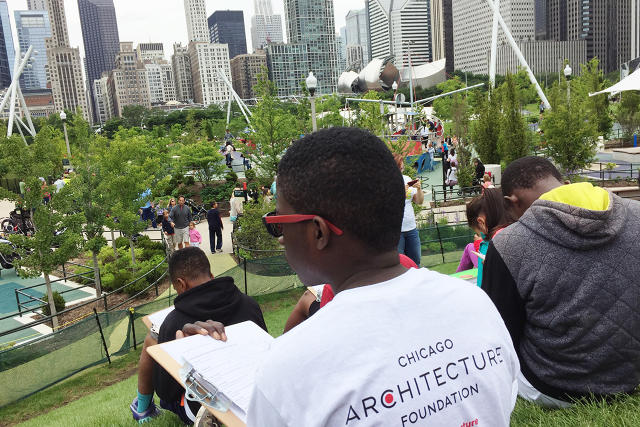
This fall Minecraft, the blockbuster game acquired by Microsoft for $2.5 billion in 2014, is moving into classrooms with an education-specific edition geared toward elementary school students. Microsoft, which is selling licenses between $1 and $5 per student, hopes to see teachers embrace the game as an entry point to lessons on computational thinking as well as traditional subjects like history, math, and science. To help teachers get started, the company has developed lesson plans around topics like the Temple of Artemis as a way to inspire creative applications for what is in many respects a remarkably free-form digital learning environment.
In the meantime, educational organizations including the Chicago Architecture Foundation have been at the forefront of developing curriculum around Minecraft, which even in its mainstream format lends itself to teaching and learning.
“The kids and parents love it,” says Gabrielle Lyon, vice president of education and experience for the foundation. “The parents are so relieved—they feel like, my kid is on Minecraft all the time, I don’t know if they’re learning anything. They come here and they feel great that their children are developing skills and getting to be social, but also doing things that take them outside.”
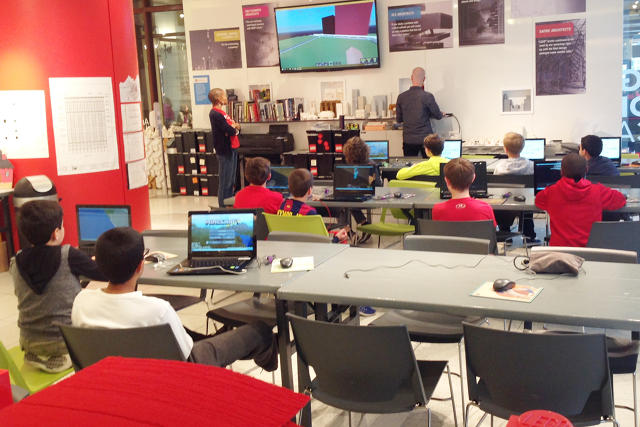
Students in the weeklong camp programs that the foundation introduced in August spend time at their computers, but also visit sites around Chicago in order to observe built environments with a critical eye and experience otherwise abstract architectural concepts, like pathways. On their first day, they measure the size of a Minecraft cube.
“Students leave with a real idea of scale and context,” Lyon says. “‘Read a building:’ we’re talking about materials, we’re talking about structures.”
So far, the foundation has introduced two variations on Minecraft camps, the skyscraper program and another called “Build a City” that emphasizes green space. Both run for five days, culminating in a 90-minute “showcase” that allows students to present their work. During the school year, the foundation plans to offer weekend workshops that use Minecraft to engage students in projects like repurposing historic buildings.
LEGOs and other physical blocks play a supporting role in the Minecraft programs, and a central role in other classes and workshops. Across all tools and mediums, Lyon says, the foundation’s focus on design and critical thinking remains intact. “The technology is a means to an end. Minecraft works best when it’s the best tool to get the job done.”
Chicago parent Jennifer Goolsby says she saw that philosophy come together in her son’s experience. “They don’t even realize they’re learning about arches and trusses and domes,” she says. “The hook is the technology.” Of course, the learning extends far beyond the redstone walls.
Forget Blueprints—For The Young Architects Of Tomorrow, It’s All About “Minecraft”
‘Minecraft: Story Mode’ Episode 8 Launch Trailer Released Alongside Season Finale
A new trailer for Minecraft: Story Mode Episode 8, “A Journey’s End?”, debuted on Tuesday, giving us one last sneak peek at the episodic adventure’s season finale. And some familiar voices can be heard in the final launch trailer of Minecraft: Story Mode ’s first season.
Just in case you forgot, the season finale of Minecraft: Story Mode is out today, bringing a close to a series so popular it was expanded by 60 percent a week before the series’ fifth (and presumed final) chapter was released by Telltale. Jesse and his friends finally have a chance to make it back home, after many adventure sand one hell of a journey, provided you can help them navigate the handful of obstacles still in their path. And the party’s final tests should be pretty familiar to any longtime Minecraft players out there.
The new trailer also marks the first time Minecraft: Story Mode players get a chance to hear Jim Cummings and Kari Wahlgren step into their new roles as Hadrian and Mevia. It looks like the season finale will also include a bit of Spleef, the competitive Minecraft mod that was rechristened as Tumble for the various console versions of the game. And that won’t be the only mini-game we see in episode eight.
For one last (free) look at Minecraft: Story Mode Episode 8, “A Journey’s End?”, take a couple minutes to watch the new launch trailer from Telltale Games. Then head down to the comments section and let us know whether or not you’ve enjoyed the first season of Minecraft: Story Mode.
Minecraft: Story Mode is available on PlayStation 3, PS4, Xbox 360, Xbox One, PC, iOS and Android. The season finale is now available on all platforms.
Be sure to check back with iDigitalTimes.com and follow Scott on Twitter for more Minecraft: Story Mode coverage throughout 2016 and however long Telltale Games continues to support its first episodic Minecraft adventure in the months ahead.
‘Minecraft: Story Mode’ Episode 8 Launch Trailer Released Alongside Season Finale
Minecraft May Finally Be Coming To US Schools
Shortly before the school year ended in June, 1,700 kids American kids got to do what most students can only dream of — play video games in class. No, the 100 educators that allowed this were not slacking off. They were helping Microsoft beta test a new Minecraft Education Edition, which the company plans to offer to schools across the globe within the next few weeks.
While the computer game, which challenges kids to use their imagination by building futuristic virtual worlds, has been offered in Swedish schools since 2013, it has not been widely embraced by educators elsewhere. But project director Deirdre Quarnstrom believes that this new education version, where students get to create their own stories and games, will be a huge success with both student and teachers.
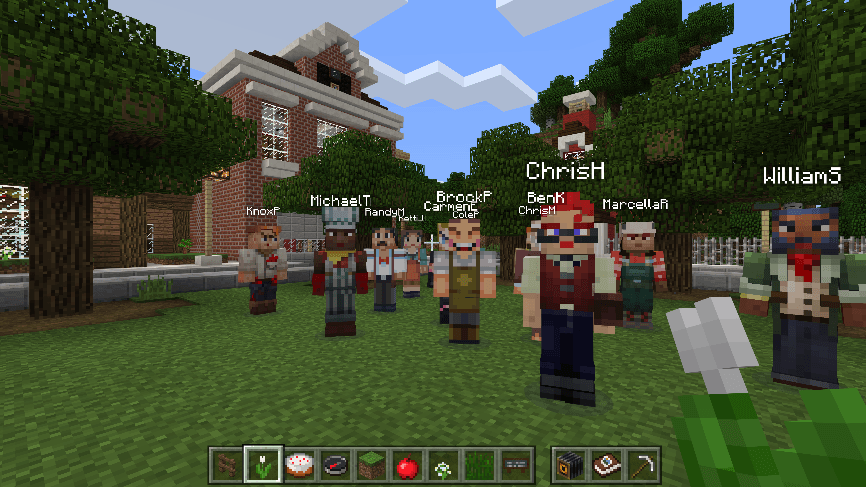
Of course, the classroom version will have some differences from the traditional game you might play at home. Non-player characters, placed into the game by teachers, will provide guidance and narration, while a chalkboard will allow them to write instructions. A control panel called Classroom Mode will enable educators to grant students access to resources, monitor their location, send messages, and even teleport students to the right place should they wander off or get lost. Teachers unfamiliar with the game can select from numerous pre-created immersive lesson plans that range from exploring the Temple of Artemis to modeling biodiversity loss.
For educators concerned that bringing video games into the classroom might reduce classroom collaboration, there is a multi-player mode. Using this, students can enter other’s games and help their peers solve an issue they may be struggling with or test out new ideas.

However, while these features add more structure and allow teachers to give specific assignments, students still have complete freedom to use their imagination and creativity to program a game based on their interest, whether it’s a science-fiction movie or their favorite fantasy series. Quarnstrom says Microsoft has kept the game “pure” to ensure kids (aged 5 and above) have an authentic Minecraft experience.” The director believes that “a lot of what creates that kind of magical educational experience is the no-rules sandbox environment. Students really feel inspired to keep going and set up their own challenges, which is exactly what educators want to see.”
The students and teachers fortunate to be selected for the June beta test seem to agree. 13-year-old Elena Rezac, who built a quest-driven maze inspired by the science fiction movie,”The Maze Runner,” says that the game is “lots of fun because you can do whatever you want.” Her teacher, Steve Isaacs, approves of the game because it encourages students to be inventive. The educator says that the game’s varied choices allow every kid to find an area where he/she can succeed.

The Minecraft Education Edition that is expected to cost between $1 to $5 a student, will be launched sometime this month. Meanwhile, educators can introduce gaming to their classrooms by signing up for the beta version. While it doesn’t have all the features of the final product, it is a good way how students engage with this popular video game, without paying a dime.
‘Minecraft’ Latest News & Update: Pocket Edition Receives 0.16 Patch; What to Expect in the Update
‘Minecraft’ Latest News & Update: Pocket Edition Receives 0.16 Patch; What to Expect in the Update

- Mojang’s ‘Director of Fun’ Lydia Winters speaks about ‘Minecraft’ during the Microsoft Xbox E3 press conference at the Galen Center in Los Angeles, California.
(Photo: Christian Petersen/Getty Images)
“Minecraft” Pocket Edition received the 0.15.7 update on Aug. 31. Mojang released this to fix bugs and provide improvements on the game’s graphics’ texture. The game developer wants to give the best to fans so the 0.16.0 update was immediately released as a follow-up, and it is available for free.
The updates were release with a very short time difference so it is apparent that Mojang is working non-stop for “Minecraft” Pocket Edition. The latest patch was announced by Mojang’s Tommaso Checchi via his Twitter account.
Prior to the release of update, he tweeted, “And yes 0.16 is coming, but we don’t announce things before said things are already implemented. Be patient, it will be cool!”
The 0.16.0 update is also called “The Boss Update” and based on the information posted “Minecraft” Pocket Edition Wiki page. The latest changelog shows changes including new options, addition of polar bears, new maps, underwater temples and more.
In the previous games, players used to distinguish whether the area is ground or water through looking at the color blue and green but in 0.16 update. The maps will reveal more texture and colors to identify various environments including the desert, jungle, ice or swamp.
In addition, the menu settings was redesigned and more options were added by Mojang. Checchi revealed that there is a new inventory mode that allows players to to easily search for items and blocks by names. This change will definitely speed up the gameplay.
With all the great changes, it is easy to see that patch 0.16.0 offers more content to “Minecraft” PE compared to other updates which only provided minor improvements on the game’s performance and visuals.
At any rate, although there is no announcement, the update may only be exclusive to “Minecraft” Pocket Edition on Windows 10. Gamers will have to wait for more details about the 0.16 patch notes on the upcoming MineCon 2016 which will start on Sept. 24.
‘Minecraft’ Latest News & Update: Pocket Edition Receives 0.16 Patch; What to Expect in the Update
Minecraft: Story Mode’s eighth episode will end the tale on Sept. 13
Telltale Games will release “A Journey’s End?”, the eighth and final entry in its Minecraft: Story Mode episodic adventure game, on September 13 for the Xbox One, Xbox 360, PC, and other platforms.

Telltale’s blog states:
So what are our heroes up against in this concluding chapter of the season? With Harper leading them to the world of the Old Builders, Jesse and crew finally have their chance to return home… but it won’t be easy, and the stakes are high. You’ll need to take on opponents in a series of gladiatorial games to win your freedom, save your friends, and maybe, just maybe, make it back to your own world!
The all-star cast gets two more new additions for Episode 8: ‘A Journey’s End?’, with Jim Cummings (Winnie the Pooh, Darkwing Duck) as Hadrian, the leader of the Old Builders; and Kari Wahlgren (Rick and Morty, The Fairly OddParents) as Mevia, the Enforcer.
Minecraft: Story Mode was originally announced as a five-episode game from Telltale back in the fall of 2015, but the developer decided to launch a three-episode extension in June. You can purchase those three extra “Adventure Pass” episodes for $14.99 if you already own the first episode, which is priced at $4.99
Minecraft: Story Mode’s eighth episode will end the tale on Sept. 13
‘Minecraft: Story Mode’ Episode 8 Release Date Confirmed For Next Week
The final chapter of Minecraft: Story Mode’s first season is only a week away, Telltale Games confirmed on Wednesday, and the developers lined up two more guest stars for the eighth chapter of the episodic Minecraft adventure. And the best part of today’s announcement is that the duo, much like entire first season of Minecraft: Story Mode, should have something that appeals to both older and younger generations.
According to a press release, Telltale Games will publish the eighth episode of Minecraft: Story Mode on Sept. 13, wrapping up both the game’s first season of content and the content covered by the three-episode Adventure Pass that went on sale earlier this year. Details on the episode are relatively scarce, and there’s no trailer at this time, but Telltale did include a brief description of the season finale in today’s announcement. Here’s how the studio describes Episode 8:
In Episode 8: ‘A Journey’s End?’, with Harper leading them to the world of the Old Builders, Jesse and crew finally have their chance to return home… but it won’t be easy, and the stakes are high. You’ll need to take on opponents in a series of gladiatorial games to win your freedom, save your friends, and maybe, just maybe, make it back to your own world!
The final episode also features appearances from Jim Cummings (Darkwing Duck) and Kari Wahlgren (Rick and Morty) as newcomers Hadrian and Mevia. There’s still no word on an all-encompassing purchase for the first season, meaning you still have to purchase both the Season and Adventure passes to get all eight episodes, but at least you won’t have to wait much longer to marathon your way through Minecraft: Story Mode in one sitting.
Minecraft: Story Mode is available for PlayStation 3, PS4, Xbox 360, Xbox One, Wii U, PS Vita, PC, iOS, Android and probably a few high-end refrigerators. The series’ eighth episode, “A Journey’s End?”, debuts Sept. 13.
‘Minecraft: Story Mode’ Episode 8 Release Date Confirmed For Next Week
Enter to win Flynn’s Log 1 in Paperback
Enter by Oct 31
